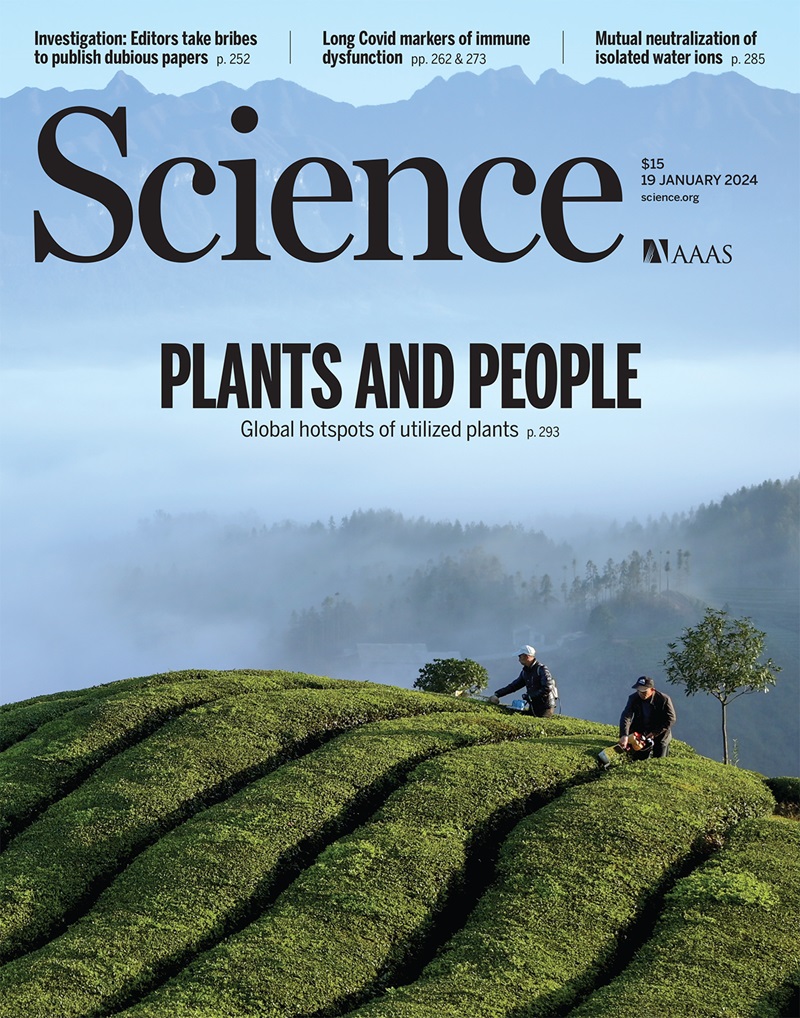Compartmentalization reduces conflict in multipartner plant-insect symbioses
IF 44.7
1区 综合性期刊
Q1 MULTIDISCIPLINARY SCIENCES
引用次数: 0
Abstract
Many symbioses involve one host species having several mutualist partners, yet theory predicts that unrelated symbionts lead to destabilizing conflict through competition for host resources. We combined isotope labeling, computed-tomography three-dimensional models, behavioral field experiments, and mathematical models to show that Squamellaria plant hosts reduce conflict among their multiple ant symbiont species by offering nesting sites (domatia) divided into compartments with separate entrances. As long as compartmentalization is maintained, different symbiont species can peacefully coexist, but experimental removal of compartment walls leads to deadly conflicts. Modeling suggests that compartmentalization optimizes nutritional benefits by increasing the time during which domatia harbor large ant colonies. These results reveal a conflict-reduction mechanism that allows hosts to take advantage of unrelated symbionts, which may be widespread in multipartner mutualisms.
区隔减少了多伴侣植物-昆虫共生中的冲突
许多共生关系涉及一个寄主物种与几个共生伙伴,但理论预测,不相关的共生体通过竞争寄主资源导致不稳定的冲突。我们结合同位素标记、计算机断层扫描三维模型、行为现场实验和数学模型,表明鳞状植物寄主通过提供划分为独立入口的隔间(domatia)来减少其多个蚂蚁共生体物种之间的冲突。只要隔离保持不变,不同的共生物种可以和平共处,但实验性地拆除隔离壁会导致致命的冲突。建模表明,分区化通过增加domatia容纳大型蚁群的时间来优化营养价值。这些结果揭示了一种减少冲突的机制,允许宿主利用不相关的共生体,这可能在多伙伴共生关系中广泛存在。
本文章由计算机程序翻译,如有差异,请以英文原文为准。
求助全文
约1分钟内获得全文
求助全文
来源期刊

Science
综合性期刊-综合性期刊
CiteScore
61.10
自引率
0.90%
发文量
0
审稿时长
2.1 months
期刊介绍:
Science is a leading outlet for scientific news, commentary, and cutting-edge research. Through its print and online incarnations, Science reaches an estimated worldwide readership of more than one million. Science’s authorship is global too, and its articles consistently rank among the world's most cited research.
Science serves as a forum for discussion of important issues related to the advancement of science by publishing material on which a consensus has been reached as well as including the presentation of minority or conflicting points of view. Accordingly, all articles published in Science—including editorials, news and comment, and book reviews—are signed and reflect the individual views of the authors and not official points of view adopted by AAAS or the institutions with which the authors are affiliated.
Science seeks to publish those papers that are most influential in their fields or across fields and that will significantly advance scientific understanding. Selected papers should present novel and broadly important data, syntheses, or concepts. They should merit recognition by the wider scientific community and general public provided by publication in Science, beyond that provided by specialty journals. Science welcomes submissions from all fields of science and from any source. The editors are committed to the prompt evaluation and publication of submitted papers while upholding high standards that support reproducibility of published research. Science is published weekly; selected papers are published online ahead of print.
 求助内容:
求助内容: 应助结果提醒方式:
应助结果提醒方式:


